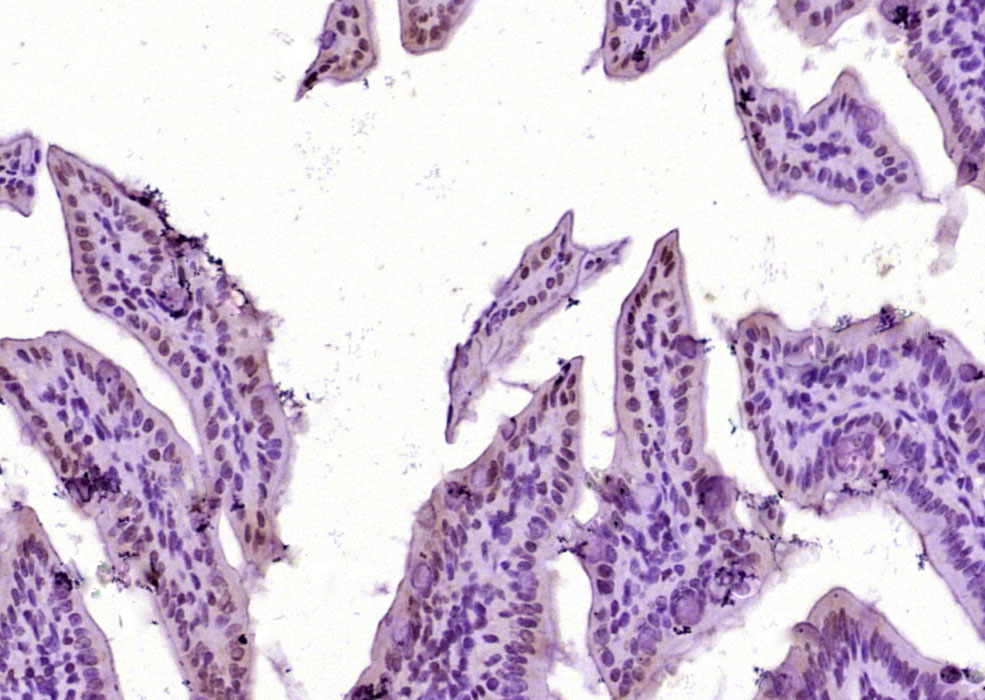
Rabbit Anti-LIM protein/LPP antibody
DKFZp779O0231; FLJ30652; FLJ41512; LIM domain containing preferred translocation partner in lipoma; LIM domain-containing preferred translocation partner in lipoma; LIM protein; Lipoma preferred partner; Lipoma-preferred partner; lpp; LPP_HUMAN.
View History [Clear]
Details
Product Name LIM protein/LPP Chinese Name 脂肪瘤相关蛋白抗体 Alias DKFZp779O0231; FLJ30652; FLJ41512; LIM domain containing preferred translocation partner in lipoma; LIM domain-containing preferred translocation partner in lipoma; LIM protein; Lipoma preferred partner; Lipoma-preferred partner; lpp; LPP_HUMAN. Research Area Tumour immunology Cell adhesion molecule Cell Surface Molecule Immunogen Species Rabbit Clonality Polyclonal React Species Mouse, (predicted: Human, Rat, Chicken, Dog, Cow, Horse, Rabbit, ) Applications ELISA=1:5000-10000 IHC-P=1:100-500 IHC-F=1:100-500 IF=1:100-500 (Paraffin sections need antigen repair)
not yet tested in other applications.
optimal dilutions/concentrations should be determined by the end user.Theoretical molecular weight 80kDa Cellular localization The nucleus cytoplasmic Form Liquid Concentration 1mg/ml immunogen KLH conjugated synthetic peptide derived from human LIM protein: 411-510/612 Lsotype IgG Purification affinity purified by Protein A Buffer Solution 0.01M TBS(pH7.4) with 1% BSA, 0.03% Proclin300 and 50% Glycerol. Storage Shipped at 4℃. Store at -20 °C for one year. Avoid repeated freeze/thaw cycles. Attention This product as supplied is intended for research use only, not for use in human, therapeutic or diagnostic applications. PubMed PubMed Product Detail LPP (LIM containing lipoma preferred partner), is a scaffolding protein which contains three LIM domains at its carboxy terminus, preceded by a proline rich pre LIM region containing a number of protein interaction domains. LPP localizes to sites of cell adhesion, such as focal adhesions and cell-cell contacts and may be involved in cell-cell adhesion and cell motility. LPP also shuttles through the nucleus and may function as a transcriptional co-activator. The human LPP gene maps to chromosomal location 3q28, and preferentially translocates to the HMGIC gene in a subclass of human benign mesenchymal tumors known as lipomas. Alternate splicing results in multiple transcript variants.
Function:
May play a structural role at sites of cell adhesion in maintaining cell shape and motility. In addition to these structural functions, it may also be implicated in signaling events and activation of gene transcription. May be involved in signal transduction from cell adhesion sites to the nucleus allowing successful integration of signals arising from soluble factors and cell-cell adhesion sites. Also suggested to serve as a scaffold protein upon which distinct protein complexes are assembled in the cytoplasm and in the nucleus.
Subcellular Location:
Nucleus. Cytoplasm. Cell junction. Cell membrane. Found in the nucleus, in the cytoplasm and at cell adhesion sites. Shuttles between the cytoplasm and the nucleus. It has been found in sites of cell adhesion such as cell-to-cell contact and focal adhesion which are membrane attachment sites of cells to the extracellular matrix. Mainly nuclear when fused with HMGA2/HMGIC and MLL.
Tissue Specificity:
Expressed in a wide variety of tissues but no or very low expression in brain and peripheral leukocytes.
DISEASE:
Note=A chromosomal aberration involving LPP is associated with a subclass of benign mesenchymal tumors known as lipomas. Translocation t(3;12)(q27-q28;q13-q15) with HMGA2 is shown in lipomas.
Note=A chromosomal aberration involving LPP is associated with pulmonary chondroid hamartomas. Translocation t(3;12)(q27-q28;q14-q15) with HMGA2 is detected in pulmonary chondroid hamartomas.
Note=A chromosomal aberration involving LPP is associated with parosteal lipomas. Translocation t(3;12)(q28;q14) with HMGA2 is also shown in one parosteal lipoma.
Note=A chromosomal aberration involving LPP is associated with acute monoblastic leukemia. Translocation t(3;11)(q28;q23) with MLL is associated with acute monoblastic leukemia.
Similarity:
Belongs to the zyxin/ajuba family.
Contains 3 LIM zinc-binding domains.
SWISS:
Q93052
Gene ID:
4026
Database links:Entrez Gene: 4026 Human
Entrez Gene: 210126 Mouse
Omim: 600700 Human
SwissProt: Q93052 Human
SwissProt: Q8BFW7 Mouse
Unigene: 5724 Human
Product Picture
Bought notes(bought amounts latest0)
No one bought this product
User Comment(Total0User Comment Num)
- No comment



 +86 571 56623320
+86 571 56623320




